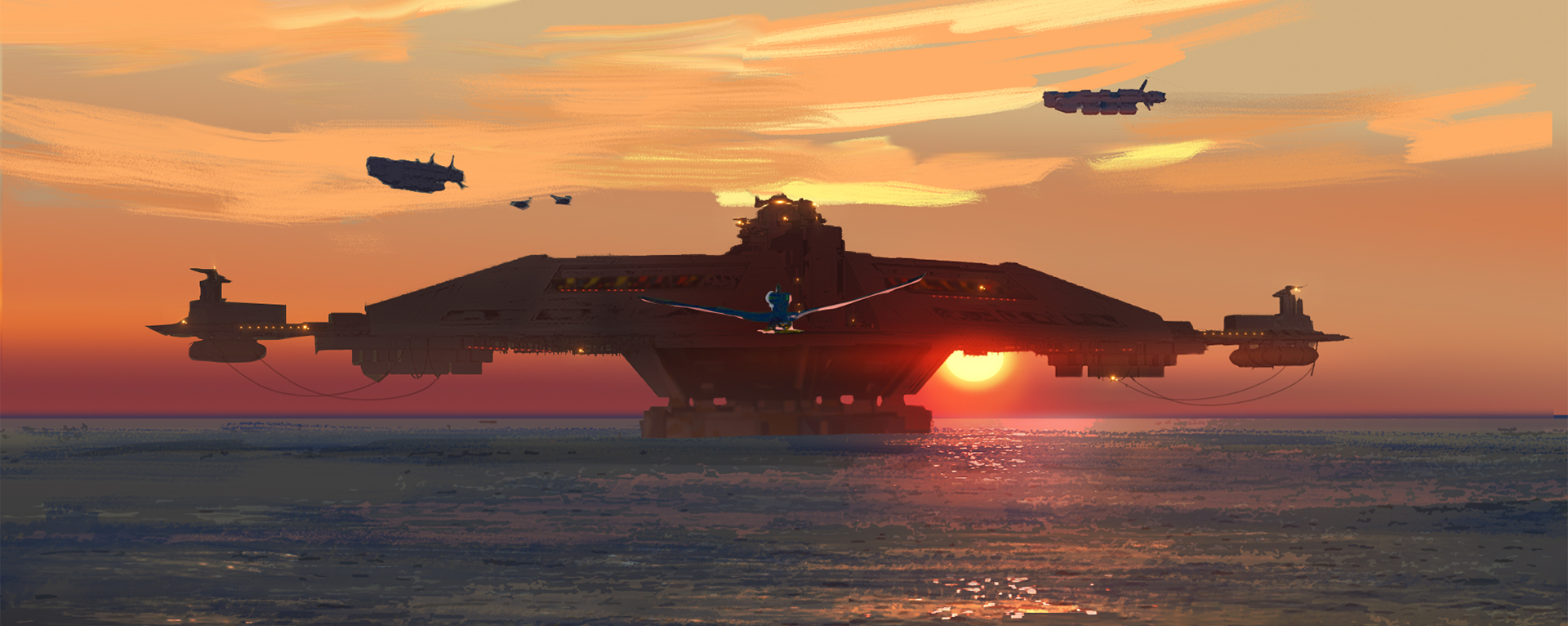Employee Spotlight: Molly Denmark
Lucasfilm Animation’s Senior Color Key Artist Started Her Career in Games
First, can you tell us your current title and summarize your day-to-day responsibilities?
I’m the senior color key artist for Lucasfilm Animation. My primary job is to paint the color keys, also referred to as Lighting Concepts (LCs), for each episode. I also work on some of the matte paintings.
I started at Lucasfilm Animation midway through season three of Star Wars Rebels, worked on Star Wars Resistance, and the finale episodes for Star Wars: The Clone Wars season seven. I’m currently working on Star Wars: The Bad Batch.
How does your role fit within your larger team?
I am part of the design art department and the lighting team. It’s a unique role. I’m currently the only LC designer. I get to see what is being designed by the concept team months before an episode goes through lighting, and I get to see the lighting and effects shots coming in which is a lot of fun.
When did you start at the company, and in what role?
I started in the spring of 2016. I was hired to fill the LC role held by a friend who was moving over to Industrial Light & Magic. He was my office mate years ago at LucasArts, the former Game division of Lucasfilm. I never knew there was even a position like that within Lucasfilm at the time. I told him, “Let me know if they ever need another color key artist.”
What were your first impressions of Lucasfilm?
I actually started my career at Lucasfilm back in 1999. I was hired right out of art school from The Academy of Art University in San Francisco, and joined LucasArts. I had some friends who graduated a year or two before me already working for LucasArts and Lucas Learning (another division at the time). I knew about the company through them.
I grew up near Modesto, California, so I was very aware of George Lucas. I really liked the Bay Area and didn’t want to move to Los Angeles or anywhere too far from my family. When I graduated, I only knew of LucasArts and Pixar in the area. Luckily LucasArts was the first and only place I applied, and I was offered a texture painting position. Even though I was hired as a texture painter, I had no clue about 3D animation. I studied illustration and painting in art school. I wasn’t computer savvy, and didn’t have any 3D graphics experience.
My first art director and I started on the same day. She taught me everything from Photoshop to Maya. The project we were put on was at the very beginning stage of development, and didn’t need a texture artist yet. She asked if I could work on key art and concept design. At that time the concept drawings were done with markers. I was a figure drawer in school, and painter. I had no clue how to use markers, and be successful at what she was asking me to do. I had photoshop, but no one was using it yet for concept art. I told her I knew how to use oil paint and acrylics, so she drove me to the art store. I never took on the position of 3D texture artist. I spent the next 13 years as a concept artist at LucasArts working on games for Star Wars, Indiana Jones, Monkey Island, and became part of Lucas Labs (a team at LucasArts developing Indie-style games and new IP). My first impressions of that time were of a company that was fun and supported growth for new artists coming into the field.
What first inspired you get involved in art and the industry in the first place?
I don’t know what really inspired me to get into the industry. I knew I wanted to work in an office setting that made cool things. As a kid, I thought I’d be an architect because my parents wanted the doctor/lawyer/engineer choices for me. I thought architect fit into their expectations, but I could also make things. I didn’t get into art until I attended Modesto Junior College, and one of my teachers said, if I was serious enough, I should look into art school instead of a state university. I thought the Academy of Art had an architect design program at the time. Then at some point in my senior year, I thought I wanted to do layout for animation. 3D video games were becoming a big thing and they needed 2D artists so that’s was my entry into the industry.
Did you have a familiarity with Lucasfilm Animation when you were working at LucasArts?
I was still at LucasArts when Lucasfilm Animation started up, so I was definitely aware of the division. When LucasArts closed, I stayed in video games because that is what I knew. When I got the call to work on Rebels, I hadn’t been following the show, but my kids were watching it. I switched gears and binged the first two seasons with them before my interview.
How did your previous experience prepare you for your new role?
I had been working in video games as concept artist for 16 years at that point. Lucas Labs was the best creative outlet during my career as a concept designer. I had the opportunity to make up whatever I wanted on a lot of the projects, and it wasn’t tied to any of our existing franchises. If you could dream it up and pitch it to the team, the programmers would start making rapid prototypes.
What is your favorite part of your job at Lucasfilm Animation?
As much as I enjoyed designing for games, the day to day act of making imaginary things always fell to color, mood, and lighting as my strengths. That is why I jumped for the opportunity to specialize in color keys at Lucasfilm Animation.
Is there anything about your job or your team that you think people outside would find surprising or different in the way you/it works?
I am not a fast painter. My style ends up looking painterly and loose, but that doesn’t equal fast. I am constantly trying to improve methods to work faster and more efficiently, but at the end of the day it takes me as long as it takes me.
Are there any types of skills or attributes (beyond the normal qualifications) that you think are important for someone in your role or one like it?
I think this applies to both a color key artist and concept artist: good listening skills. I once worked in retail, and I gained all my skills there. It’s helped me read in between the lines with any art director or lead. Some are excellent at communicating what needs to happen, and some you really need to ask the right questions or even read body language to see if you are headed in the right track, so you don’t have to completely course correct too often.
Do you have a favorite memory (or memories) of your time on the job? Any stand-out accomplishments or cool opportunities?
I actually made a mental note back in 2004-2005 to remember the view from my office at Letterman Digital Arts Center in the Presidio. I was on the top floor in a corner office with two walls of windows facing the Golden Gate Bridge. I knew no other office would ever compare, and I appreciated how awesome I had it at the time. LucasArts was the first to move into the Presidio location when it was built.
Do you have a favorite character from a Lucasfilm movie or production, and why?
That’s easy: Yoda. Wise with few words.
What advice would you give to those aspiring to join Lucasfilm?
Be good at what you do. Good is rare enough. Be good at your skill, be a good employee, be a good colleague, and be a good person. You don’t have to be the best, but when you are good in all aspects of the job you can do well in this field.
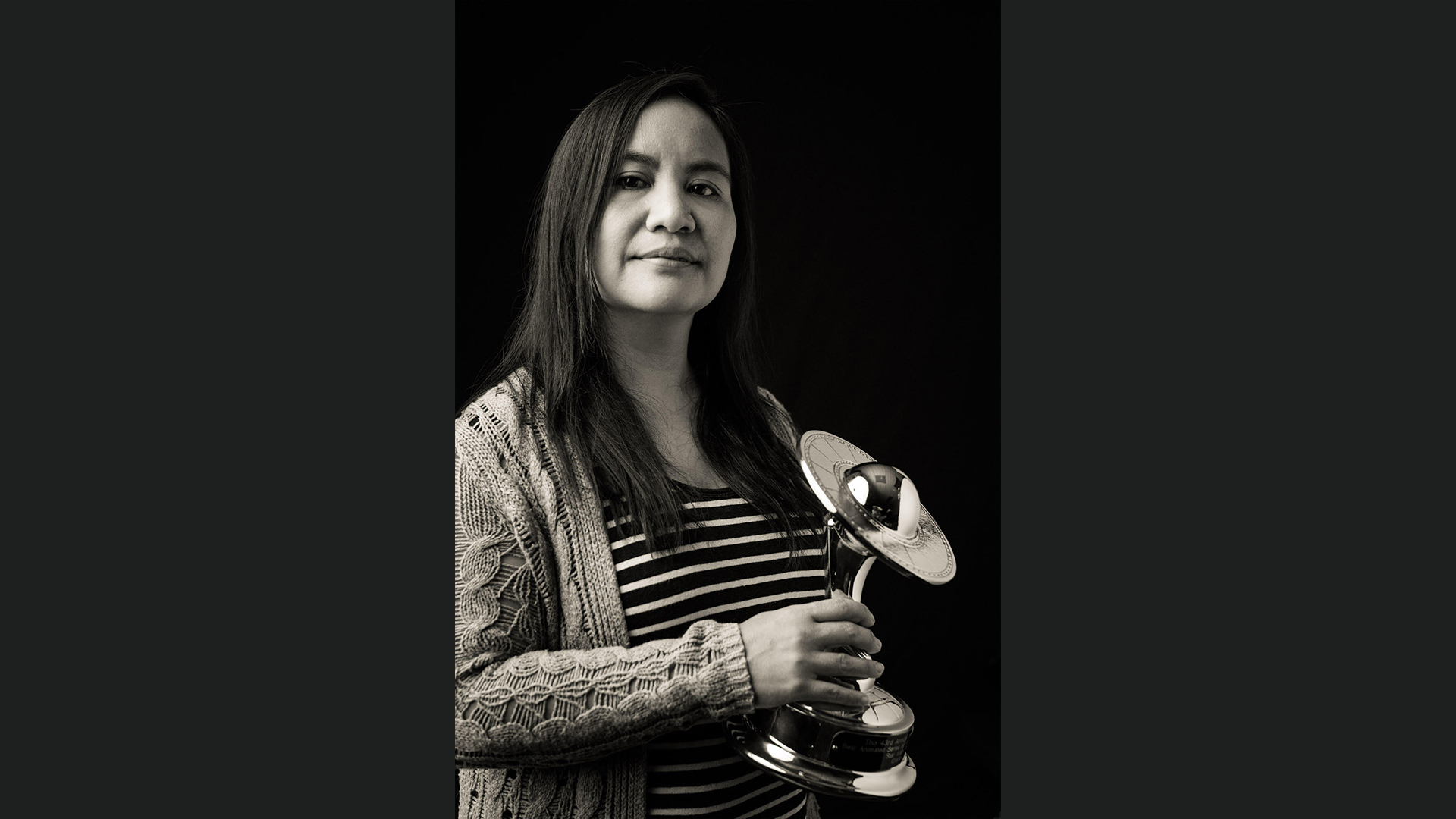
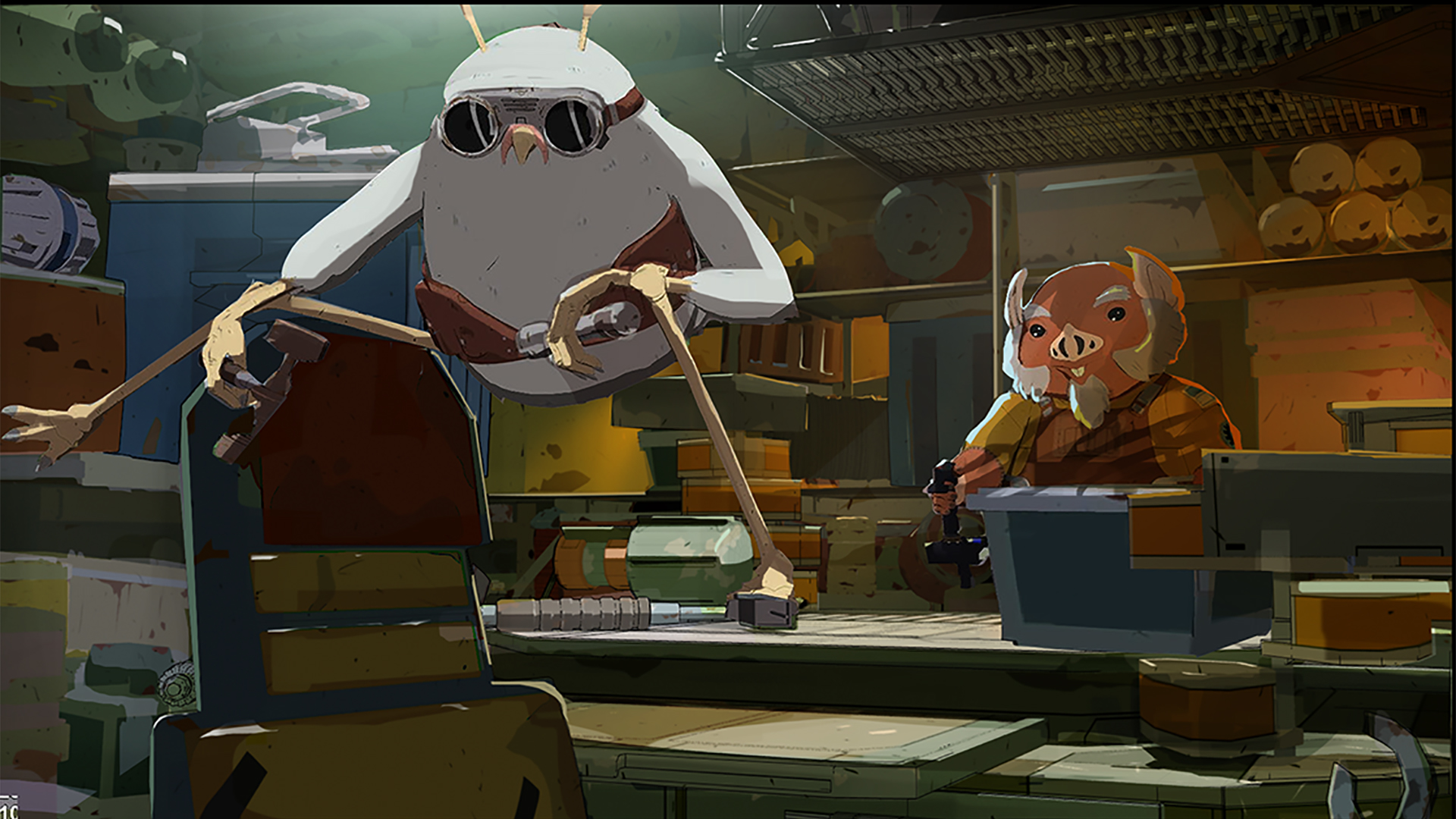
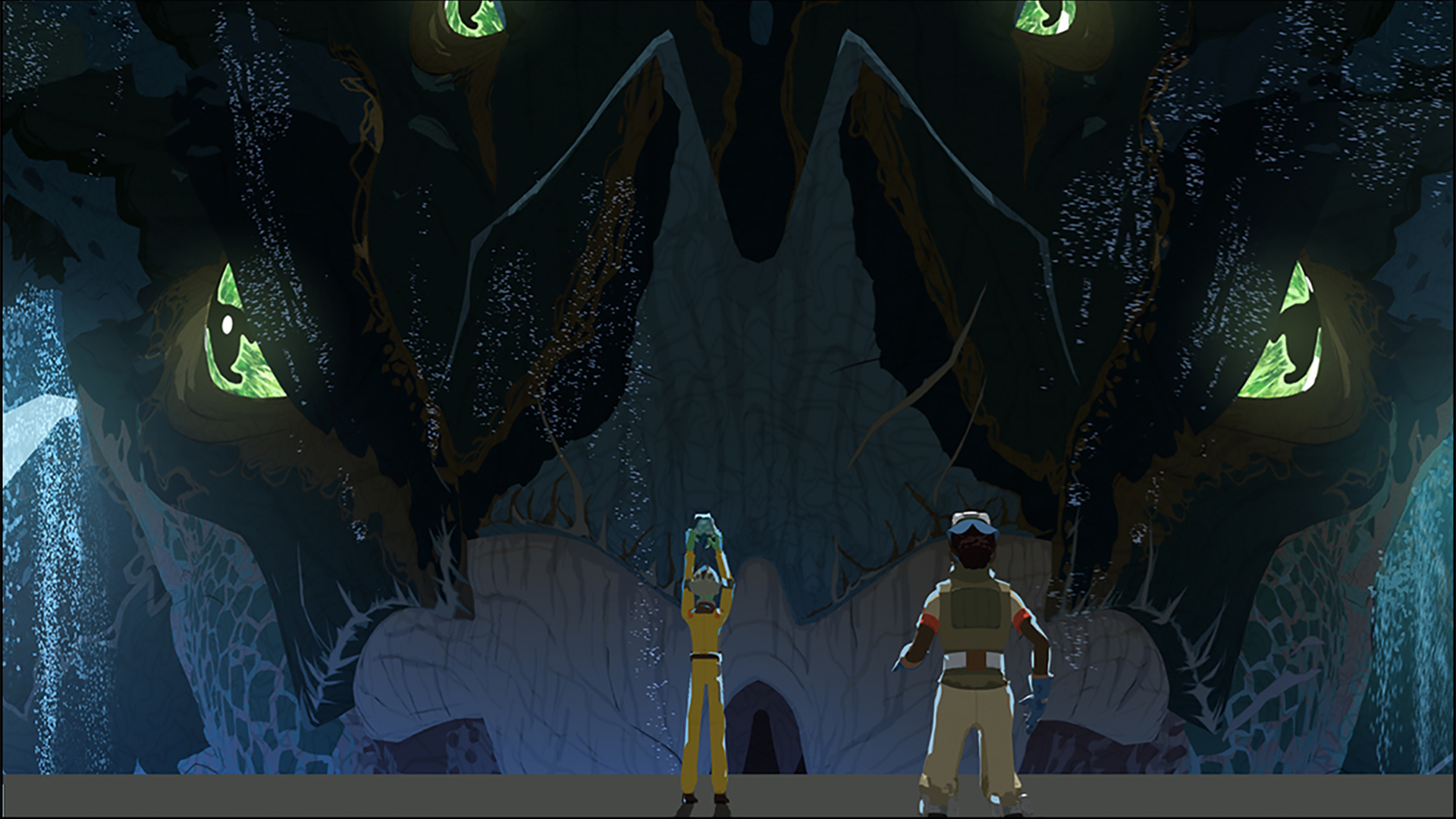
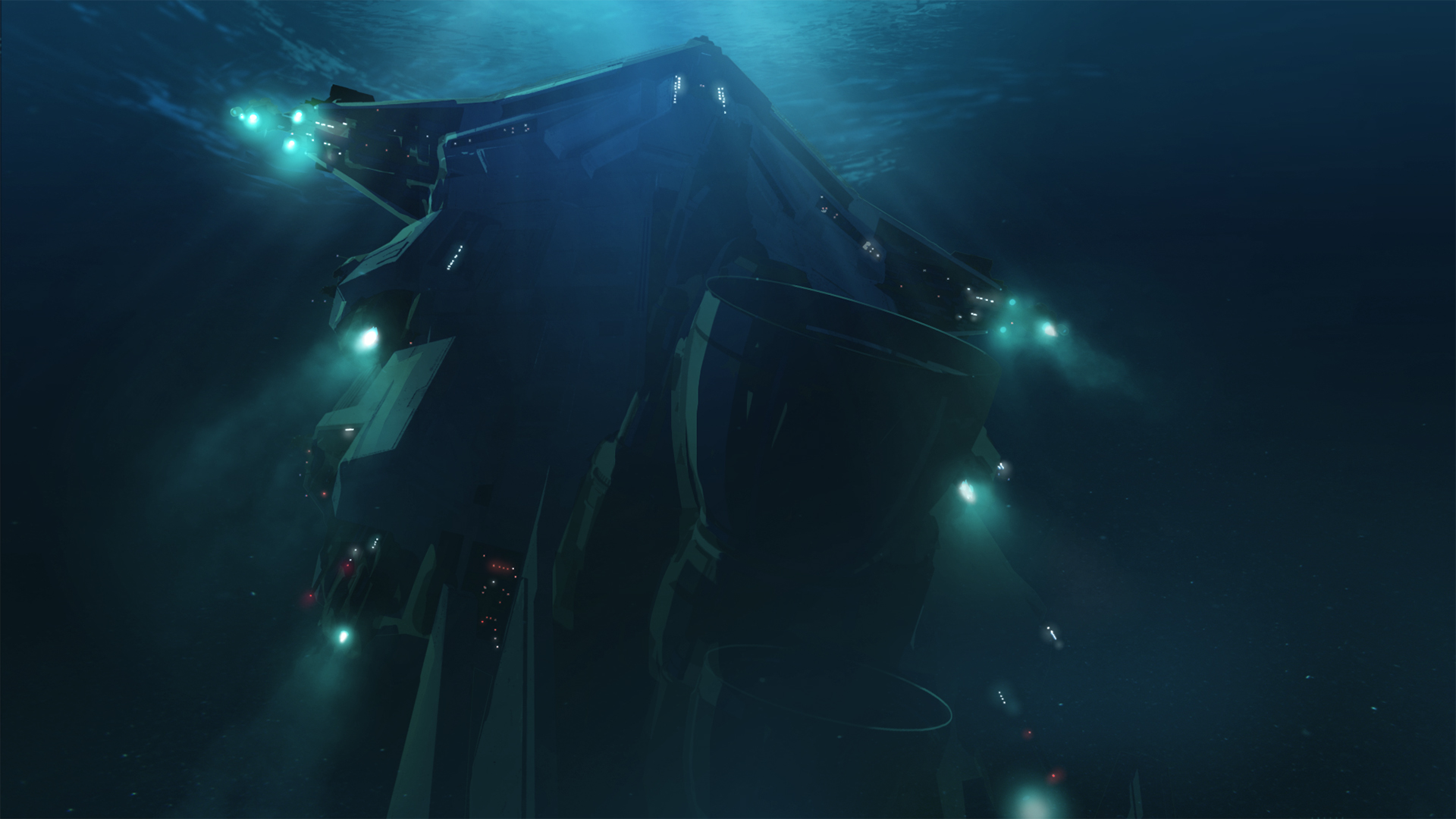
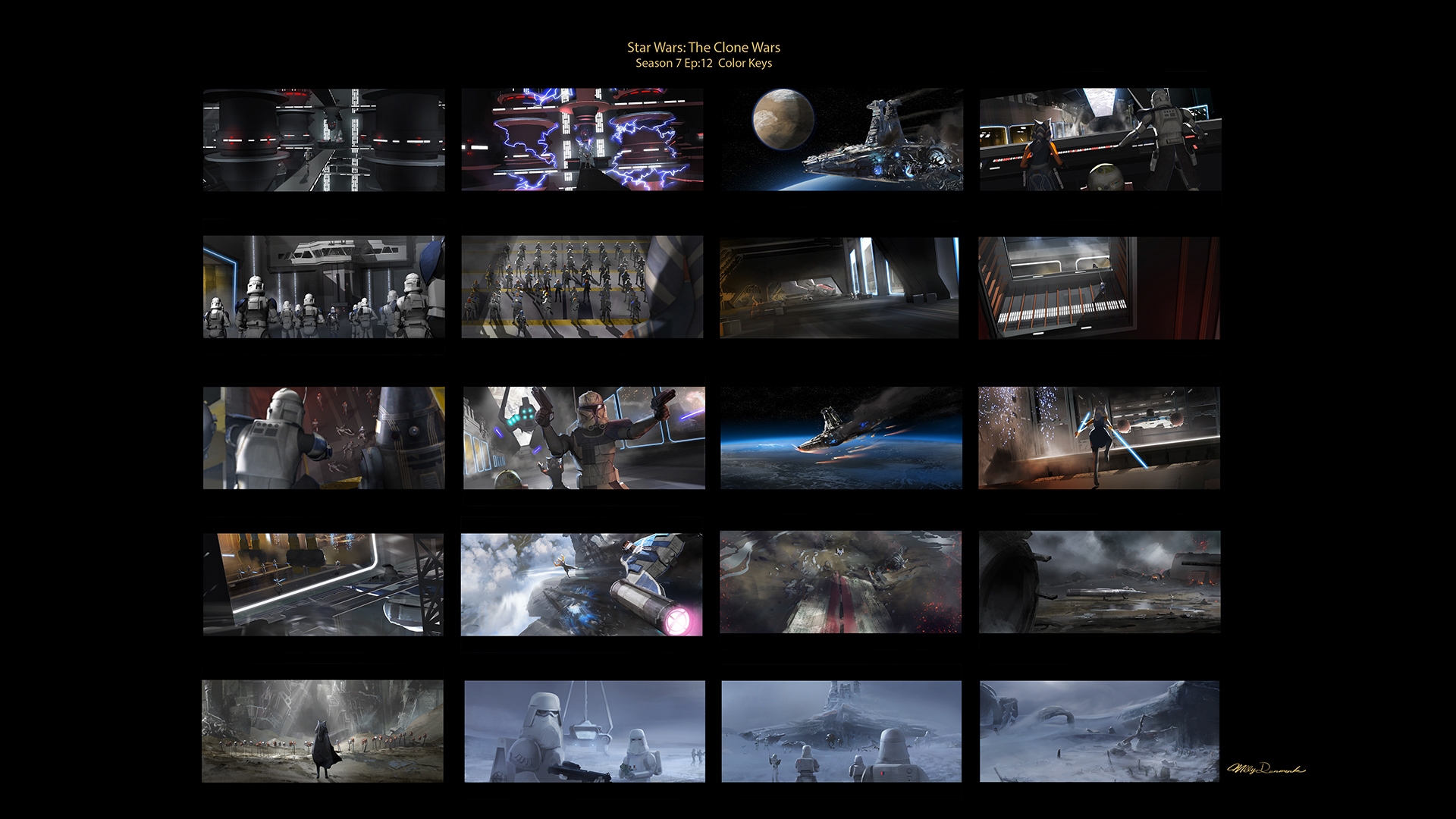
Lucas O. Seastrom is a writer and historian at Lucasfilm.

